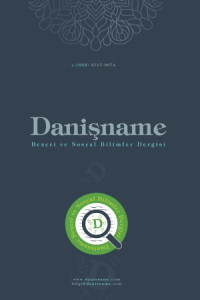Dervişler, Fakihler, Gaziler Erken Osmanlı Döneminde Dinî Zümreler (1300- 1400), Haşim Şahin (İstanbul: Yapı Kredi Yayınları, 2020), 322 sayfa, ISBN: 978-975-08-4692-2
İslam tasavvufu tarihî seyri içinde VI./XII. yüzyıldan itibaren tarikatların inkişafıyla kurumsallaşmaya başlamış, böylece XII. ve XIII. yüzyıllarda İslâm coğrafyasının birçok yerinde tekkeler toplum hayatına girmiştir. Doğuda siyasi anlamda Moğol istilaları gibi sorunlar, Anadolu topraklarının birçok mutasavvıfla tanışmasını beraberinde getirmiş; Osmanlı Devleti’nin kurulmasıyla birçok tarikat Anadolu coğrafyasında faaliyet gösterip yaygınlaşma imkânı bulmuştur. Tarikatlara ait tekkeler tasavvufî düşünce ve yaşamın topluma açılan kapısı olmuş ve sosyal yapı üzerinde kalıcı izler bırakmıştır. Medresede yetişen alimler ise Osmanlı toplum yapısını şekillendiren diğer bir unsur olup genelde kitabî İslam’ın temsilcisi olarak ifade edilmiştir. Bu çalışmada; Haşim Şahin tarafından hazırlanan, Osmanlı’nın kuruluş döneminde toplumsal yapıyı inanç, düşünce, kültür gibi birçok açıdan inşa eden derviş zümreleri ile beraber, fakihlerin ve gazilerin tesirlerinin de anlatıldığı eserin incelenmesi yapılmıştır.
Dervishes, Fakihs, Veterans Religious Groups in the Early Ottoman Period (1300-1400), Haşim Şahin (İstanbul: Yapı Kredi Publishing, 2020), 322 pages, ISBN: 978-975-08-4692-2
In the historical course of Islamic Sufism, VI./XII. century began to be institutionalized with the development of religious orders, thus XII. and XIII. In the centuries, dervish lodges entered the social life in many parts of Islamic geography. Political problems in the East such as the Mongol invasions brought the Anatolian lands to meet many Sufis; With the establishment of the Ottoman Empire, many sects had the opportunity to operate and spread in the Anatolian geography. The dervish lodges belonging to the sects have been the gateway to mystical thought and life and left permanent marks on the social structure. Scholars educated in the madrasa are another factor that shaped the Ottoman social structure and they were generally expressed as the representative of the Islamic Islam. In this study; The work, which was prepared by Haşim Şahin, in which the influences of jurists and veterans were described, together with the dervish groups who built the social structure in many aspects such as belief, thought and culture during the founding period of the Ottoman Empire, were examined.
